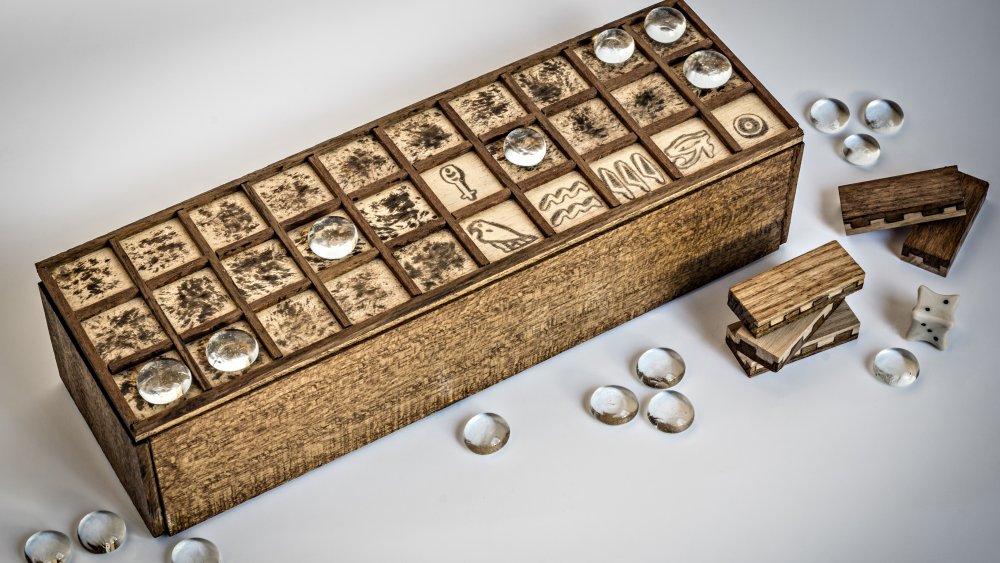The Truth About The Ancient Board Games You Never Knew About
Roughly 5,000 years ago, the ancient Egyptians invented papyrus. And voila! With just a few smooshed up reeds our species took its first tentative steps toward its love affair with jotting important stuff down. At around the same time in human history we see the first evidence that humans were sinking some serious leisure time into board games. Historical coincidence? Perhaps.
Historical synergies aside, the nerdishness of our kind clearly runs deep and true. Around 3,000 BCE, curious little boxes began to be interned alongside Ancient Egyptian royalty. These ornate artifacts are emblazoned with a grid of squares, ten long by three wide, and are usually found with an accompanying set of figurines. Any nerd worth their D20 will instantly recognize the familiar click and rattle of the noble art of board gaming. The ancient Egyptian game in question is Senet.
The rules, as described in Smithsonian Magazine, are a pretty basic affair. Two players roll dice to move their counters down the board while trying to thwart their opponent's advance. Compared to the sprawling strategic melodramas of your present-day board game, Senet offered a disarmingly simple way for two ancient world geeks to indulge in a fun battle of wits. But the game is thought to have slowly gained deeper religious significance. Senet offered a way for players to contemplate the afterlife, and what it meant to overcome life's obstacles. There was, perhaps, an element of reassurance to the game. In Senet as in life, once you were done you could sweep your token from the board and live to fight another day.
Ancient board games reveal how we once saw the world
One weird truth of ancient board games is that they offer a candid view into how people from a different age approached the game of life — like a quick 'n sneaky casual snapshot taken when the subjects weren't deliberately composing themselves to look good. Viewed from this perspective, there's something cozy and familiar about Senet. It's easy to relate to the idea of a series of advancements and setbacks shaping a life-story. Five thousand years later, a lot of folks who've never seen the inside of a pyramid probably see life through an eerily similar lens. But other board games betray a twisted glimmer of more bizarre — even downright macabre — ways of viewing life.
Take Tafl, a popular collection of strategy games first played throughout Scandinavia in 400 CE and then across Iceland and Britain over the next 700 years. One popular variation, (and a game which may well earn the prize for sounding most like an explosive sneeze), is Hnefatafl. According to Board Game Geek, this game abandons the standard gaming idea of two equal opponents. One of the first known asymmetrical games, Tafl involved a large number of enemies attempting to surround and capture a king. Meanwhile, his few remaining loyal subjects lay down their lives to help their liege find a safe haven. If board games are a metaphor for life, then this is a life all about sacrifice. Solitary heroics play second-fiddle to the selflessness of a good and loyal minion — of laying down your life as required.
Just as the popular board game Pandemic may be an oddly helpful simulation to help modern-day humans think about how to handle a public health disaster, perhaps Hnefatafl (bless you) was a way to contemplate the inherent unfairnesses of dying for a king. Here's the most important takeaway though: nothing justifies the soulless atrocity that is Monopoly.

